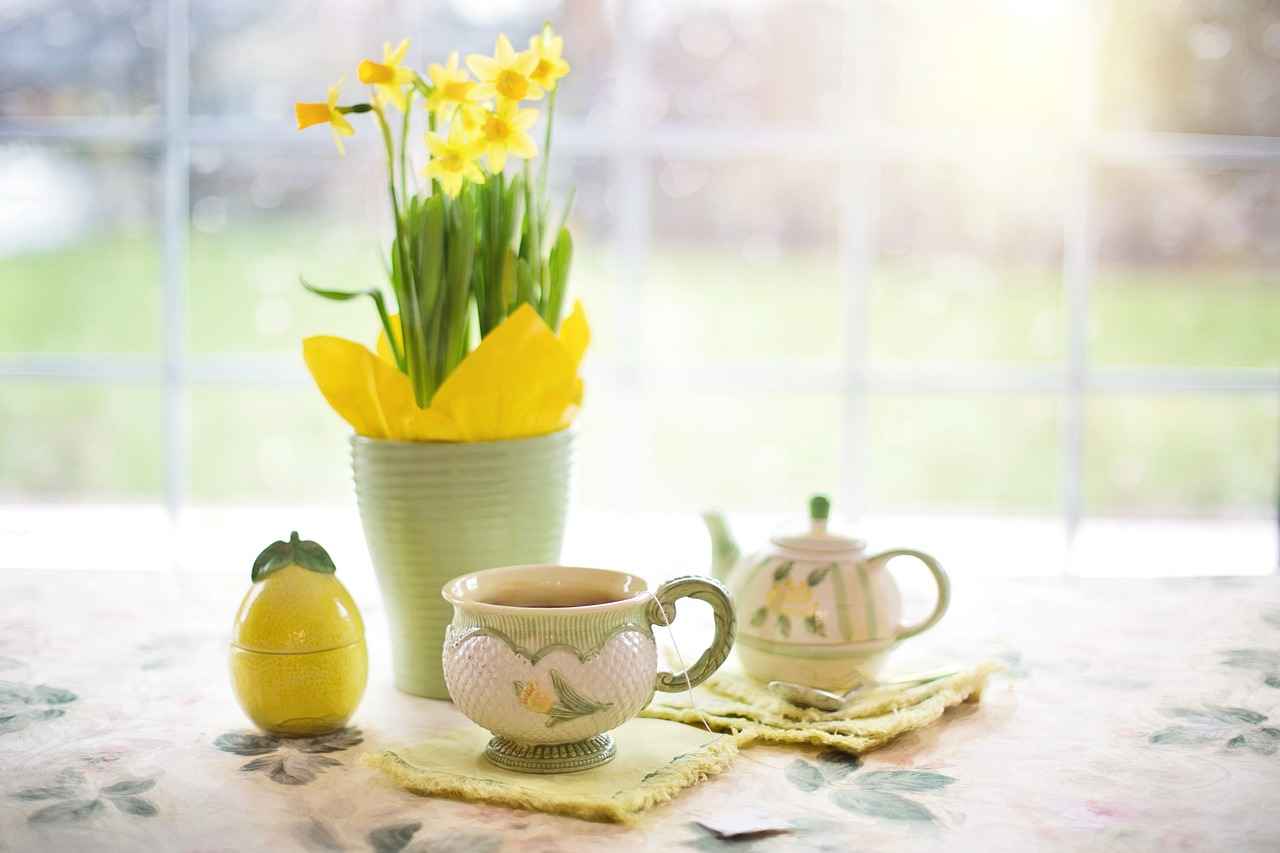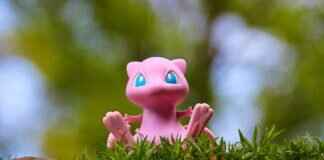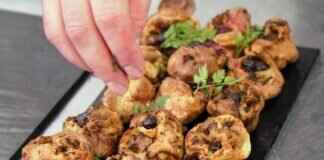This article explores how Indian families in New York City celebrate Easter, highlighting cultural traditions, community events, and the blending of diverse customs that enrich this festive occasion.
The Significance of Easter in Indian Culture
Easter is not just a day for celebration; it is a time of reflection and renewal for many Indian families, particularly those from Christian backgrounds. In India, Easter is celebrated with a deep sense of spirituality, marking the resurrection of Jesus Christ and symbolizing hope and new beginnings. The traditions associated with Easter in India often include attending church services, engaging in communal prayers, and partaking in festive meals with family and friends. The values of love, forgiveness, and community are emphasized during this time, making it a significant occasion for Indian Christians.
In New York City, Indian families carry these rich traditions into their celebrations, creating a unique blend of cultural practices that reflect both their Indian heritage and their new American surroundings. The observance of Easter in NYC serves as a reminder of the importance of faith and family, as well as the joy of coming together as a community.
How Indian Families Celebrate Easter in NYC
Indian families in New York City celebrate Easter in a variety of ways, from religious observances to vibrant family gatherings. Many families begin the day by attending special church services that cater to the Indian community. These services often incorporate familiar hymns and prayers in native languages, providing a sense of belonging and cultural connection. Following the church service, families typically gather for a festive meal that features both traditional Indian dishes and Easter-specific foods, bridging their cultural roots with their current environment.
Family gatherings are characterized by laughter, storytelling, and the sharing of memories. Children often participate in Easter egg hunts, a tradition that has been embraced from Western customs, adding an element of fun and excitement to the day. The combination of traditional Indian practices with newer customs creates a rich tapestry of celebration that is both meaningful and enjoyable for all.
Traditional Easter Foods in Indian Households
Food is an integral part of any celebration, and Easter is no exception. Indian families in NYC prepare a variety of dishes that reflect their cultural heritage while also incorporating Western influences. Traditional Easter meals may include dishes such as lamb curry, vegetable biryani, and fish fry, showcasing a mix of flavors and cooking styles.
Moreover, many families opt to prepare special Easter breads, akin to the traditional hot cross buns, but with an Indian twist, such as adding spices or nuts. The fusion of Indian and Western culinary practices during Easter not only highlights the creativity of these families but also symbolizes the blending of cultures that is characteristic of the Indian diaspora in NYC.
Popular Indian Easter Dishes
- Fish Curry: A staple in many coastal Indian families, this dish is often prepared with a variety of spices and coconut milk, making it a flavorful option for Easter.
- Chicken or Lamb Biryani: This fragrant rice dish is a favorite during celebrations, often made with marinated meat and aromatic spices.
- Sweet Treats: Desserts such as kheer (rice pudding) and gulab jamun (sweet syrup-soaked balls) are commonly enjoyed during Easter festivities.
Sweet Treats for Easter Celebrations
No celebration is complete without sweets, and Easter is no different. Indian families often prepare a variety of traditional sweets to share with friends and family. Popular options include barfi, a sweet made from condensed milk and flavored with cardamom, and peda, which is made from khoya (reduced milk) and sugar.
These treats not only satisfy the sweet tooth but also serve as a way to express love and hospitality. Many families also engage in baking activities, creating colorful and decorative Easter-themed cookies that reflect both Indian and Western aesthetics, further enhancing the spirit of the holiday.
The Role of Community in Easter Celebrations
Community plays a vital role in how Indian families celebrate Easter in NYC. Many families participate in local church events, which often include special masses, community meals, and charity initiatives. These gatherings foster a sense of unity and belonging among attendees, allowing families to connect with others who share similar cultural backgrounds and values.
Additionally, community outreach programs during Easter often focus on helping the less fortunate, reflecting the core values of compassion and generosity that are central to the holiday. Indian families are known to contribute to food drives, donate to local charities, and participate in various volunteer activities, reinforcing the spirit of giving that Easter embodies.
Church Services and Religious Observances
Religious observances form the backbone of Easter celebrations for Indian families. Many attend special church services that are tailored to the Indian community, where hymns are sung in various Indian languages, and the liturgy may incorporate traditional elements that resonate with the congregation. These services not only celebrate the resurrection of Jesus Christ but also provide a platform for cultural expression.
Families often dress in their finest attire, showcasing traditional Indian garments, which adds a vibrant touch to the celebrations. The sense of community during these services is palpable, as families come together to share in their faith and traditions.
Special Masses for the Indian Community
In NYC, several churches offer special Easter masses specifically designed for the Indian community. These masses often feature a blend of Western and Indian music, creating a unique worship experience. The incorporation of traditional instruments and songs makes the service feel familiar and comforting, allowing families to fully engage in the celebration.
During these masses, it is common for families to light candles and offer prayers, reinforcing their faith and hope for the future. The sense of togetherness during these services is a significant aspect of how Indian families celebrate Easter, making it a cherished tradition.
Community Outreach and Charity Events
Easter is also a time for giving back to the community. Indian families in NYC often engage in various outreach initiatives, reflecting the holiday’s spirit of compassion and generosity. Many families participate in food drives, providing meals for those in need, and contribute to local charities that support underprivileged communities.
These charitable activities not only help those less fortunate but also serve as a reminder of the importance of community and shared values. By coming together to support one another, Indian families demonstrate the true essence of Easter, which is about love, kindness, and togetherness.
Decorations and Easter Traditions in Indian Homes
Decorating homes for Easter is a beloved tradition among Indian families in NYC. Many families adorn their homes with vibrant decorations that reflect both Indian and Western customs. Common decorations include colorful eggs, floral arrangements, and handmade crafts that symbolize renewal and rebirth.
These decorations not only create a festive atmosphere but also serve as a way to express creativity and cultural identity. Families often engage in decorating together, fostering a sense of unity and excitement in anticipation of the holiday.
Symbolic Decorations for Easter
Symbolism plays a significant role in Easter decorations. Indian families often incorporate symbols such as eggs, which represent new life and resurrection. Flowers, particularly lilies, are also popular, symbolizing purity and renewal. These elements are not only visually appealing but also carry deep cultural meanings, enriching the overall celebration.
DIY Decoration Ideas for Families
Crafting decorations can be a fun and engaging activity for families during Easter. Simple DIY projects, such as painting eggs or creating garlands from paper flowers, allow families to bond while expressing their creativity. These activities provide an opportunity for children to learn about the significance of Easter while having fun, making the holiday even more memorable.
Blending Indian and Western Easter Traditions
The fusion of Indian and Western customs enriches Easter celebrations for Indian families in NYC. Many families embrace Western traditions, such as egg hunts and the Easter Bunny, while also maintaining their cultural practices. This blend creates a unique and vibrant celebration that honors both their heritage and their new environment.
Incorporating Western Customs into Indian Celebrations
Egg hunts have become a popular activity among Indian families, providing a fun way for children to engage in the festivities. Many families also adopt the tradition of the Easter Bunny, incorporating it into their celebrations in a way that resonates with their cultural background. This blending of customs not only enhances the celebration but also allows families to create new traditions that reflect their unique experiences.
Maintaining Cultural Heritage While Celebrating
While embracing new traditions, Indian families strive to maintain their cultural heritage during Easter celebrations. Families often share stories of their cultural practices, ensuring that younger generations understand the significance of their roots. This balance between honoring tradition and embracing new customs allows families to create a rich and meaningful celebration that reflects their identity.
Conclusion: Celebrating Diversity and Unity
Easter serves as a beautiful example of multicultural celebration among Indian families in NYC. The blending of diverse customs and traditions enriches the holiday, allowing families to come together in unity and celebration. The importance of community, faith, and shared values is at the heart of these celebrations, making Easter a truly special occasion for Indian families in New York City.

The Significance of Easter in Indian Culture
Easter is a significant celebration for Christian communities worldwide, and in India, it holds a special place within the diverse cultural landscape of the nation. The festival not only commemorates the resurrection of Jesus Christ but also embodies a rich tapestry of traditions and values that resonate deeply with Indian society. This article explores the religious and cultural significance of Easter in India, highlighting its unique customs and the sense of community it fosters.
In India, Easter is celebrated predominantly by Christian communities, particularly in states like Goa, Kerala, and Nagaland, where a significant population identifies as Christian. The festival is marked by a blend of religious observance and local customs, reflecting the country’s rich diversity. For many, Easter is not merely a day of religious significance but a time for family reunions, community gatherings, and cultural expression.
One of the core aspects of Easter in India is its religious significance. The resurrection of Jesus Christ symbolizes hope, renewal, and the promise of eternal life. This message resonates with many, transcending religious boundaries and fostering a sense of unity among various communities. Churches across India hold special midnight masses on Easter Sunday, where hymns are sung, and prayers are offered. These services often include traditional elements such as local languages and music, making them accessible and relatable to the congregants.
In addition to the religious observances, Easter in India is characterized by its vibrant cultural traditions. Families engage in various activities leading up to the celebration, including decorating homes with flowers and symbols of Easter, such as eggs and crosses. These decorations are not only aesthetically pleasing but also carry deep symbolic meanings, representing rebirth and new beginnings. The practice of dyeing eggs, for instance, has been adopted from Western customs but is infused with local flavors and styles, creating a unique Indian representation of this tradition.
Food plays a vital role in Easter celebrations, with families preparing special meals that often include traditional dishes. In many households, fish curry, hot cross buns, and an array of sweets are prepared, showcasing the blend of Indian and Western culinary practices. The communal aspect of sharing meals further emphasizes the importance of family and togetherness during this festive period.
Moreover, Easter serves as a time for charity and giving back. Many communities organize outreach programs, where families come together to help the less fortunate. This spirit of giving reflects the core teachings of Christianity and reinforces the values of compassion and kindness that are central to the celebration of Easter.
Overall, the significance of Easter in Indian culture extends beyond mere religious observance. It embodies a rich blend of traditions, values, and communal spirit that resonates with many. As Indian families celebrate this festival, they not only honor their faith but also contribute to the vibrant cultural mosaic that defines the country.

How Indian Families Celebrate Easter in NYC
In the vibrant tapestry of New York City, the celebration of Easter by Indian families showcases a beautiful blend of cultural traditions and communal spirit. This festive occasion offers a unique opportunity for families to engage in meaningful religious observances and joyful gatherings, reflecting their rich heritage while embracing the multicultural essence of the city.
- Religious Observances: Many Indian families begin their Easter celebrations with a visit to local churches. These services often incorporate traditional hymns and prayers in regional languages, allowing families to connect deeply with their faith. The atmosphere is filled with a sense of reverence as they commemorate the resurrection of Jesus Christ, a pivotal event in Christianity.
- Family Gatherings: After church services, families often come together for a festive meal. This gathering is not just about food; it’s about strengthening familial bonds and sharing stories that celebrate their cultural heritage. The warmth of these gatherings is palpable, as laughter and love fill the air.
- Community Events: In NYC, community events play a significant role in the Easter celebrations of Indian families. Many neighborhoods host Easter fairs and cultural programs that include music, dance, and other performances that reflect the diversity of the Indian community. These events foster a sense of belonging and unity among families.
Traditional Practices and Modern Adaptations
As Indian families celebrate Easter, they often blend traditional practices with modern adaptations. This fusion is evident in their choice of decorations, food, and activities.
- Decorations: Homes are adorned with vibrant decorations, often including symbols of Easter such as decorated eggs and floral arrangements. Indian families also incorporate traditional motifs that reflect their cultural backgrounds, creating a unique festive ambiance.
- Culinary Traditions: Food is a central component of Easter celebrations. Families prepare a variety of dishes that reflect both Indian and Western influences. Traditional Indian dishes like biryani and curry may be served alongside Western favorites such as roasted lamb or Easter bread, creating a delightful culinary experience.
- Activities for Children: Children play a crucial role in the celebrations. Many families organize Easter egg hunts, a tradition that has gained popularity among Indian families in NYC. This fun activity not only entertains the children but also fosters a sense of community as families come together to participate.
Charitable Giving and Community Spirit
The spirit of Easter is also reflected in the emphasis on charity and community service. Indian families often engage in various outreach initiatives during this time, reinforcing the values of compassion and generosity.
- Food Drives: Many families participate in food drives, donating meals and essentials to those in need. This act of giving back embodies the true essence of Easter, celebrating the joy of sharing with others.
- Volunteering: Community service is a common practice among Indian families during Easter. Many families volunteer their time at local shelters or community centers, helping to organize events or provide support to those less fortunate.
In conclusion, Easter serves as a vibrant celebration for Indian families in New York City, combining religious observances, cultural traditions, and community spirit. The ways in which they celebrate this festival highlight the rich tapestry of their heritage while embracing the diverse culture of the city around them.
Traditional Easter Foods in Indian Households
Food is an integral part of Easter celebrations among Indian families, where diverse culinary traditions come together to create a unique festive experience. The blending of Indian and Western dishes during this time not only reflects cultural heritage but also showcases the adaptability of Indian cuisine. Families often prepare a variety of dishes that cater to both traditional tastes and modern influences, making Easter a delightful gastronomic affair.
Fusion of Indian and Western Cuisine
During Easter, Indian families in NYC embrace a fusion of flavors, incorporating both traditional Indian dishes and popular Western fare. For instance, while the classic roast lamb may be a staple in many Western homes, Indian families often prepare mutton curry or chicken biryani as their centerpiece dish. This blend of cultures allows families to celebrate the holiday while honoring their roots.
In addition to main courses, side dishes also reflect this fusion. Salads and vegetable preparations might include ingredients commonly found in both cuisines, such as cucumbers, carrots, and spices like cumin and coriander, creating a refreshing and flavorful accompaniment to the main dishes.
Popular Indian Easter Dishes
- Fish Curry: In many coastal regions of India, fish curry is a popular dish during Easter. Families often prepare it with a rich coconut milk base, infused with spices and herbs, offering a taste of home.
- Egg Biryani: This delicious rice dish is made with marinated eggs and aromatic spices, symbolizing new life and renewal, which aligns beautifully with the Easter theme.
- Vegetable Samosas: These crispy pastries filled with spiced potatoes and peas are a favorite snack during celebrations, often served with tangy tamarind chutney.
Sweet Treats for Easter Celebrations
No Easter celebration is complete without an array of desserts. Indian families often prepare a variety of traditional sweets that are not only delicious but also carry significant cultural meanings.
- Simnel Cake: A fruitcake layered with marzipan, this cake is traditionally associated with Easter and is often made by Indian families to celebrate the occasion.
- Gulab Jamun: These sweet, syrup-soaked balls made from khoya are a favorite dessert during festivities, symbolizing joy and togetherness.
- Sheera: A semolina-based sweet dish, often flavored with cardamom and garnished with nuts, is prepared in many households as a celebratory treat.
Conclusion
The culinary landscape during Easter in Indian households is a vibrant tapestry of flavors and traditions. The fusion of Indian and Western dishes not only enhances the festive spirit but also strengthens family bonds as they come together to prepare and enjoy these meals. By embracing both their cultural heritage and new influences, Indian families create a unique and memorable Easter celebration that is rich in flavor and meaning.
Popular Indian Easter Dishes
Easter is a time of joy and celebration, and for Indian families, it is an opportunity to showcase their rich culinary heritage through a variety of traditional dishes. This section delves into the that are commonly prepared, highlighting both vegetarian and non-vegetarian options that reflect the vibrant culture and diverse traditions of Indian families.
- Vegetarian Dishes
- Paneer Tikka: A favorite among vegetarians, paneer tikka is made from marinated cubes of paneer (Indian cottage cheese) grilled to perfection. The spices used, such as cumin and coriander, give it a delightful flavor, making it a perfect starter for Easter gatherings.
- Vegetable Biryani: This aromatic rice dish, cooked with an assortment of vegetables and spices, is a staple in many Indian households. Biryani is often served with raita (yogurt sauce), making it a hearty and fulfilling option for Easter feasts.
- Chole Bhature: A popular North Indian dish, chole bhature consists of spicy chickpeas served with deep-fried bread. This dish is not only delicious but also symbolizes the spirit of sharing during festive occasions.
- Non-Vegetarian Dishes
- Chicken Curry: A classic dish in many Indian households, chicken curry is made with a blend of spices and can be prepared in various regional styles. It is often paired with rice or naan, making it a fulfilling option for Easter meals.
- Fish Moilee: Originating from Kerala, this dish features fish cooked in a coconut milk gravy with spices. Fish Moilee is light yet flavorful, making it a popular choice for Easter celebrations, especially among coastal communities.
- Lamb Vindaloo: This spicy and tangy dish, originally from Goa, is made with marinated lamb cooked in a rich sauce. Vindaloo is a favorite for special occasions, and its bold flavors make it a highlight of the Easter feast.
In addition to these main dishes, Indian families often prepare a variety of side dishes to complement their meals. Salads made with fresh vegetables, pickles, and chutneys are common accompaniments that enhance the overall dining experience. These side dishes not only add flavor but also provide a balance to the rich main courses.
Furthermore, Easter is a time for families to come together and share meals, which is reflected in the way these dishes are served. Large platters filled with a variety of options allow everyone to partake and enjoy the feast. The act of sharing food is an important aspect of Indian culture, symbolizing unity and togetherness.
As Indian families celebrate Easter, the inclusion of traditional dishes not only honors their cultural heritage but also enriches the experience of the festival. The fusion of flavors and the diversity of options available showcase the culinary richness that Indian cuisine has to offer, making Easter a truly special occasion for all.
Sweet Treats for Easter Celebrations
During Easter celebrations, Indian families embrace a variety of sweet treats that not only satisfy the taste buds but also symbolize joy and togetherness. These confections hold a special place in the festive spirit, offering a delightful blend of traditional flavors and modern interpretations. This section explores some of the most popular desserts and confections that Indian families savor during Easter festivities.
Indian cuisine is renowned for its diverse range of sweets, many of which are integral to Easter celebrations. Among the most cherished are:
- Gulab Jamun: These soft, round balls made from khoya (reduced milk) are soaked in a fragrant sugar syrup flavored with cardamom and rose water. Their rich sweetness makes them a favorite during festive occasions.
- Jalebi: A spiral-shaped sweet made from fermented batter, deep-fried, and then dipped in sugar syrup. Its crispy texture and syrupy sweetness make it a popular choice during celebrations.
- Barfi: This fudge-like sweet can be made from a variety of ingredients, including milk, coconut, or nuts. Often garnished with edible silver leaf, barfi is both visually appealing and delicious.
As Indian families in NYC celebrate Easter, they often incorporate fusion desserts that blend traditional Indian sweets with Western influences. Some notable examples include:
- Carrot Halwa Cupcakes: Combining the classic Indian dessert of gajar ka halwa with a Western cupcake format, these treats are a hit among both children and adults.
- Chocolate Samosas: A creative twist on the traditional samosa, these are filled with chocolate and nuts, offering a delightful surprise with every bite.
- Rasmalai Cheesecake: This dessert combines the creamy texture of cheesecake with the flavors of rasmalai, a popular Bengali sweet. The result is a rich and indulgent treat that is perfect for Easter gatherings.
Many families take pride in making their own sweets during Easter, often passing down recipes through generations. Making sweets at home not only allows for customization but also enhances the festive atmosphere. Here are some easy-to-make options:
- Besan Ladoo: Made from chickpea flour, these round sweets are flavored with ghee, sugar, and cardamom. They are simple to prepare and can be made in large batches.
- Kheer: A rice pudding made with milk, sugar, and flavored with cardamom and saffron. Kheer can be served warm or chilled, making it a versatile dessert for any occasion.
- Peda: These are soft, milk-based sweets flavored with cardamom and often garnished with nuts. They are easy to prepare and can be customized with different flavors.
Sweet treats play a vital role in the Easter celebrations of Indian families, symbolizing the joy of togetherness and the spirit of festivity. From traditional sweets to innovative fusion desserts, these confections not only satisfy cravings but also strengthen family bonds. Whether made at home or purchased from local sweet shops, these treats contribute to the rich tapestry of cultural celebration that defines Easter for Indian families in NYC.
The Role of Community in Easter Celebrations
Community involvement is essential during Easter, especially for Indian families living in New York City. This vibrant city, known for its cultural diversity, serves as a melting pot where various traditions blend, particularly during festive occasions like Easter. For Indian families, this holiday is not just a time for personal reflection and celebration but also an opportunity to strengthen community bonds through shared experiences and collective activities.
One of the most significant aspects of Easter for Indian families in NYC is the community events that bring people together. These events often include Easter egg hunts, potluck dinners, and cultural performances that showcase the rich heritage of the Indian community. Families come together to organize these gatherings, which not only foster a sense of belonging but also allow for the sharing of cultural practices and culinary traditions. Such events are often held in community centers, parks, or local churches, creating a festive atmosphere filled with laughter, joy, and camaraderie.
In addition to community events, church gatherings play a pivotal role in the Easter celebrations of Indian families. Many local churches offer special services that cater to the Indian community, incorporating familiar hymns and prayers in native languages. This connection to faith is crucial, as it allows families to celebrate the resurrection of Christ in a way that resonates with their cultural background. The sense of community is further enhanced during these services, where families can reconnect with old friends and meet new faces, all while participating in a shared spiritual experience.
Moreover, community outreach initiatives are a significant part of Easter celebrations. Many Indian families in NYC engage in charitable activities during this time, embodying the spirit of giving that is central to the Easter message. Families often volunteer at local shelters, participate in food drives, or contribute to fundraising efforts for various causes. This sense of altruism not only reinforces community ties but also teaches younger generations the importance of compassion and generosity.
Furthermore, the blending of Indian and Western customs during Easter celebrations highlights the adaptability of the community. While traditional practices are cherished, many families embrace Western traditions such as the Easter Bunny and egg decorating, creating a unique fusion that reflects their multicultural identity. This blending is celebrated in community events where families can share their experiences and learn from one another, enriching the overall Easter experience.
In summary, the role of community in Easter celebrations for Indian families in NYC is multifaceted. From organizing events and attending church services to participating in charitable activities, the sense of belonging and shared purpose is palpable. These communal experiences not only enhance the festive spirit of Easter but also strengthen the cultural fabric of the Indian community in New York City, making the holiday a truly enriching experience for all involved.
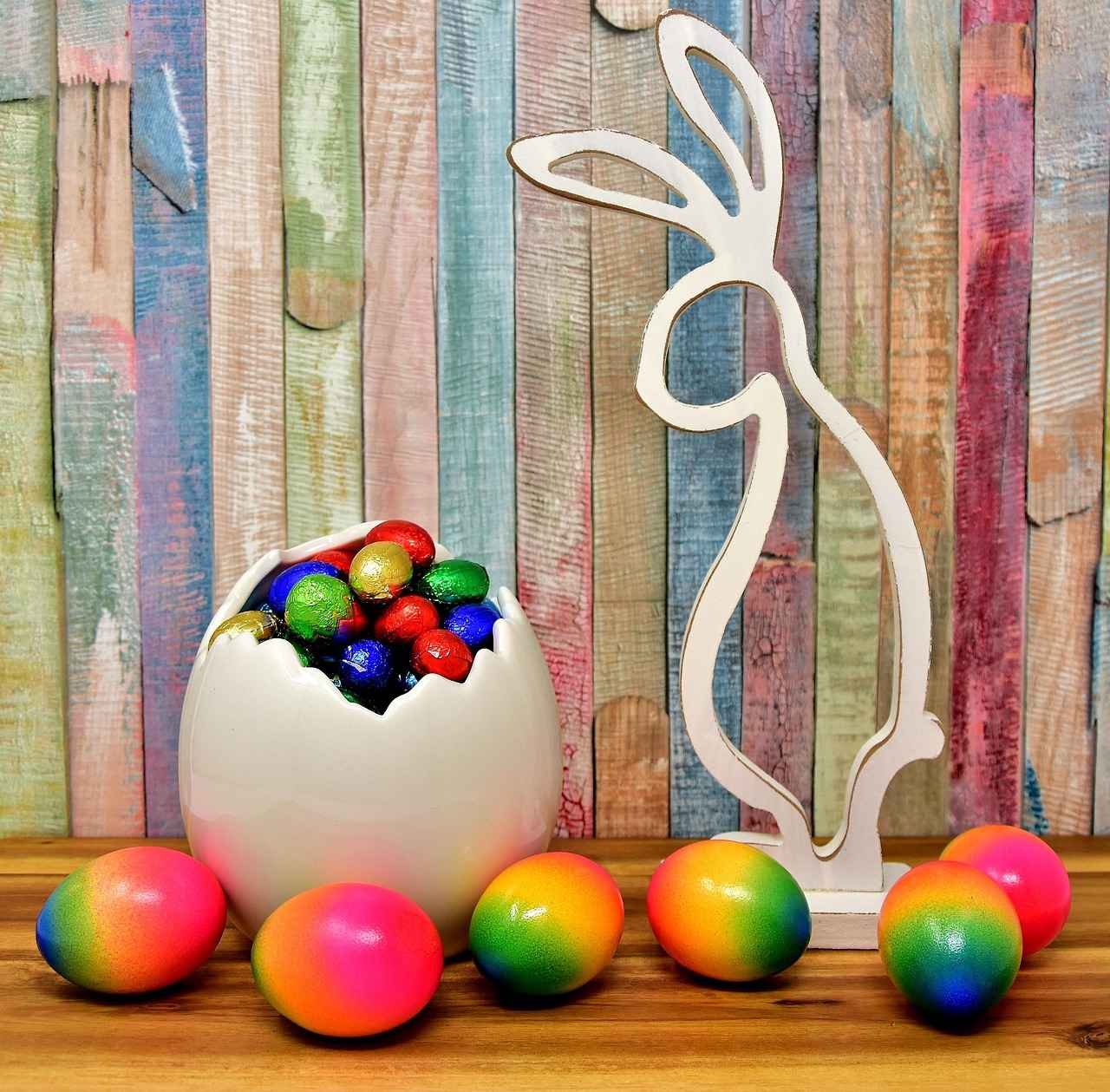
Church Services and Religious Observances
For Indian families in New York City, Easter is not just a holiday; it is a spiritual journey that begins with religious observances. These observances are deeply rooted in the traditions of the Indian Christian community, blending both ancient customs and modern practices. This section explores the types of church services that Indian families attend during Easter and how these services reflect a rich tapestry of cultural heritage.
During Easter, many Indian families gather at local churches that host special services tailored to their community. These services often include a midnight mass on Easter Sunday, which marks the resurrection of Jesus Christ. The atmosphere is filled with anticipation as families come together to celebrate with their loved ones. The use of regional languages such as Malayalam, Tamil, or Konkani during the service adds a personal touch, making the experience more relatable for attendees. This linguistic inclusion fosters a sense of belonging within the community, allowing families to connect with their roots while celebrating a significant religious event.
In addition to language, music plays a vital role in these church services. Traditional hymns, often sung in both English and regional languages, resonate through the church halls. The incorporation of cultural instruments, such as the harmonium and tabla, enriches the musical experience, making it a unique blend of Indian and Western musical traditions. This fusion not only enhances the worship experience but also reflects the cultural diversity present within the Indian Christian community in NYC.
Furthermore, churches often organize interactive activities for children and families, such as Easter egg hunts and storytelling sessions. These activities serve to engage younger generations, ensuring that they understand the significance of Easter while also enjoying the festivities. Such initiatives are crucial in maintaining the cultural identity of Indian families, as they pass down traditions to their children in an engaging manner.
Another important aspect of Easter celebrations within the Indian community is the emphasis on community service. Many churches organize outreach programs during this time, encouraging families to participate in charitable activities. This spirit of giving aligns with the core values of Easter, which emphasizes love, compassion, and selflessness. Families often come together to donate food, clothing, or funds to those in need, reinforcing the message of community support and unity.
To further enhance the religious experience, some churches invite guest speakers or theologians to share insights on the meaning of Easter. These discussions often delve into the historical and spiritual significance of the resurrection, helping attendees to reflect on their faith and the teachings of Christianity. Such educational components enrich the overall experience, allowing families to engage in meaningful conversations about their beliefs.
As the day progresses, many families gather for a festive meal following the church service. This meal often features a mix of traditional Indian dishes and Easter favorites, symbolizing the blending of cultures. Families share stories and laughter, reinforcing the bonds that tie them together as they celebrate both their faith and heritage.
In summary, church services and religious observances during Easter are a vital part of the celebrations for Indian families in NYC. These services not only provide a spiritual foundation for the holiday but also serve as a platform for cultural expression and community engagement. By blending traditional and modern elements, Indian families create a unique Easter experience that honors their heritage while embracing the spirit of the season.
Special Masses for the Indian Community
In the vibrant tapestry of New York City’s multicultural landscape, many churches recognize the importance of inclusivity, especially during significant occasions like Easter. For the Indian community, special Easter masses have become a cherished tradition, offering a unique blend of spirituality and cultural expression. These services are thoughtfully designed to resonate with the community’s diverse backgrounds, ensuring that every attendee feels a sense of belonging and connection.
One of the key elements of these special masses is the use of language. Many churches provide services in languages such as Hindi, Malayalam, and Tamil, catering to the linguistic preferences of the Indian community. This inclusion allows congregants to engage more deeply with the liturgy, fostering a greater understanding of the messages conveyed during the service. Moreover, the use of familiar languages creates a comforting atmosphere reminiscent of home, making it easier for families to participate fully in the worship experience.
Another significant aspect of these masses is the incorporation of music that resonates with Indian culture. Traditional hymns are often interwoven with contemporary Christian music, creating a rich auditory experience that reflects the community’s heritage. Instruments such as the tabla and harmonium may accompany the choir, providing a harmonious blend of Western and Indian musical traditions. This fusion not only enhances the worship experience but also serves as a reminder of the community’s roots and the shared values that unite them.
Cultural elements play a pivotal role in these services as well. Many churches decorate their spaces with vibrant colors and symbols that reflect Indian traditions. For instance, the use of flowers, particularly marigolds, is common, symbolizing purity and devotion. Additionally, churches often organize cultural performances, such as dance and drama, that depict biblical stories in a way that resonates with Indian narratives. This approach not only enriches the worship experience but also engages the younger generation, helping them connect with their faith in a culturally relevant manner.
The sense of community is palpable during these special masses. Families gather not only to worship but also to reconnect with friends and neighbors, fostering a spirit of unity and support. After the service, many churches host communal meals, allowing attendees to share traditional Easter dishes, further strengthening the bonds within the community. This gathering serves as a reminder of the importance of fellowship, especially during a time of celebration and reflection.
In summary, the special Easter masses tailored for the Indian community in NYC are a testament to the city’s rich cultural diversity. Through the thoughtful integration of language, music, and cultural elements, these services create a welcoming environment that honors both faith and heritage. They not only provide a space for spiritual growth but also reinforce the sense of community that is vital for Indian families living in a bustling metropolis. As these traditions continue to evolve, they serve as a beautiful reminder of the shared values that unite us all during this significant time of year.
Community Outreach and Charity Events
Easter is not only a time for celebration and family gatherings but also a significant opportunity for giving back to the community. Indian families in New York City actively engage in various charitable activities that reflect the true essence of the Easter spirit. This section explores how these families participate in community outreach initiatives, emphasizing the importance of compassion, generosity, and unity during this festive season.
One of the most common ways Indian families contribute to their communities during Easter is through food drives. Many families organize or participate in local food drives aimed at collecting non-perishable items and distributing them to those in need. These initiatives often collaborate with local churches and community centers, where families come together to gather food supplies and prepare meals for the less fortunate. The act of sharing a meal, especially during a time of celebration, embodies the core values of Easter—love, kindness, and generosity.
Additionally, numerous Indian families participate in charity events organized by local organizations. These events may include fundraising activities such as bake sales, charity runs, or cultural performances. The proceeds from these events are often directed towards various causes, including education for underprivileged children, healthcare initiatives, and support for local shelters. By engaging in such activities, families not only contribute financially but also foster a sense of community and solidarity among participants.
Another significant aspect of community outreach during Easter is the emphasis on volunteering. Many families dedicate their time to volunteering at shelters, soup kitchens, or community centers. This hands-on approach allows families to connect with their community on a personal level, offering assistance to those who may be struggling. Volunteering not only provides immediate help but also promotes long-term relationships within the community, reinforcing the idea of collective responsibility and support.
Moreover, Indian families often embrace the spirit of Easter by organizing community clean-up drives. These initiatives focus on beautifying local parks and neighborhoods, encouraging families to come together for a common cause. By participating in such activities, families instill values of environmental stewardship and community pride in their children, highlighting the importance of caring for the world around them.
In addition to these activities, many Indian families also focus on spreading joy through acts of kindness. This may include distributing Easter baskets filled with treats and toys to children in hospitals or orphanages. These small gestures can make a significant impact on the lives of those who may not have the means to celebrate the holiday in a traditional manner. The joy of giving during Easter reinforces the message of hope and renewal that the holiday represents.
In conclusion, Easter serves as a powerful reminder for Indian families in New York City to engage in community outreach and charitable activities. By participating in food drives, volunteering, organizing charity events, and spreading joy through acts of kindness, these families embody the true spirit of Easter. Their commitment to giving back not only enriches their own lives but also strengthens the bonds within their communities, fostering a sense of unity and compassion that transcends cultural and religious boundaries.

Decorations and Easter Traditions in Indian Homes
Decorations are a vital aspect of Easter celebrations, especially within Indian families who blend their rich cultural heritage with festive traditions. The act of decorating homes for Easter is not merely about aesthetics; it is deeply rooted in symbolism and community spirit. This section explores how Indian families in New York City adorn their homes for Easter, emphasizing the significance of these traditions in fostering a joyful and festive atmosphere.
In Indian culture, decorations are often imbued with symbolic meaning. During Easter, families frequently incorporate symbols such as eggs, flowers, and crosses into their decor. Eggs, representing rebirth and renewal, are a prominent motif during this season. In many households, eggs are painted in vibrant colors and displayed as a symbol of new life, echoing the resurrection of Christ.
Flowers also play a crucial role in Easter decorations. Families often use marigolds, which are significant in Indian tradition, to create beautiful garlands and floral arrangements that adorn their homes. These bright and fragrant flowers not only enhance the visual appeal but also symbolize purity and the arrival of spring. The use of flowers reflects a connection to nature and the celebration of life, which resonates deeply during the Easter season.
Creating decorations can be a delightful family activity that fosters creativity and bonding. Indian families often engage in DIY projects to personalize their Easter decorations. One popular idea is to create colorful, hand-painted eggs. Families can gather together to paint eggs using vibrant colors and intricate designs, turning this simple activity into a cherished tradition.
Another engaging DIY project is making paper lanterns or hanging decorations. Families can use colored paper, scissors, and glue to craft beautiful lanterns that can be hung around the home. These lanterns can be adorned with Easter symbols, further enhancing the festive atmosphere. Not only do these activities provide a fun way to celebrate, but they also allow families to express their artistic talents and create lasting memories.
While Easter decorations often include Western symbols, Indian families also incorporate traditional elements that reflect their cultural roots. For instance, Rangoli, a decorative art form made from colored powders, rice, or flower petals, is commonly created at the entrance of homes during festive occasions. During Easter, families may design Rangoli patterns that symbolize joy and celebration, welcoming guests with vibrant art.
Additionally, families may choose to display traditional Indian artifacts, such as brass lamps or idols, alongside their Easter decorations. This blend of Indian and Western elements creates a unique atmosphere that celebrates both cultural heritage and the spirit of Easter. By integrating these traditional aspects, families not only honor their roots but also enrich their Easter celebrations.
The overall aim of decorating for Easter is to create a festive atmosphere that brings joy and warmth to the home. Indian families often go beyond just visual decorations; they also incorporate scents and sounds that enhance the festive spirit. Lighting scented candles or incense can fill the home with delightful fragrances, while playing traditional or contemporary Easter music can uplift the mood.
Moreover, setting up a communal space where family and friends can gather is essential. This space can be adorned with decorations that reflect the joy of the season, such as colorful banners or festive table settings. The emphasis on creating a welcoming environment fosters a sense of community and togetherness, which is at the heart of Easter celebrations.
In conclusion, the decorations and traditions that Indian families embrace during Easter serve to create a vibrant and meaningful celebration. By incorporating both symbolic and cultural elements into their decor, families not only enhance the festive atmosphere but also strengthen their bonds with one another and their heritage.
Symbolic Decorations for Easter
Easter is a time of renewal and celebration, and for many Indian families, it is an opportunity to express their cultural heritage through vibrant decorations. The incorporation of various symbols into Easter decorations not only enhances the visual appeal of homes but also carries deep meanings that resonate with the values and traditions of Indian culture.
One of the most recognizable symbols of Easter is the egg. In many cultures, eggs represent rebirth and new beginnings. For Indian families, this symbolism aligns with the arrival of spring and the renewal of life. Decorated eggs, often painted in bright colors, are commonly displayed in homes, symbolizing hope and the promise of new life. Families may also engage in the traditional practice of dyeing eggs, which can be a fun and creative activity for children, fostering family bonding.
Flowers are another significant element in Easter decorations. In Indian culture, flowers hold a special place, often used in religious ceremonies and celebrations. During Easter, families may choose to decorate their homes with vibrant floral arrangements, such as marigolds, lotus, and jasmine, which not only beautify the surroundings but also carry spiritual significance. These flowers are often associated with purity and devotion, making them ideal for the Easter celebration.
Additionally, many families incorporate crosses into their decorations, symbolizing the resurrection of Jesus Christ. In Indian Christian households, these crosses may be adorned with flowers or other decorative elements, creating a focal point in the home. The presence of the cross serves as a reminder of faith and the essence of the Easter celebration.
Another popular decoration is the use of banners and garlands that feature Easter-themed motifs, such as bunnies, chicks, and spring flowers. These decorations are often handmade, reflecting the creativity and artistry of the family. Engaging in DIY decoration projects can also be a wonderful way for families to come together, sharing stories and laughter while crafting unique pieces that hold personal significance.
In addition to traditional symbols, many Indian families in NYC embrace Western customs by incorporating elements such as the Easter Bunny or egg hunts into their celebrations. This blending of cultures not only enriches their Easter experience but also fosters a sense of community with their neighbors and friends. The Easter Bunny, often depicted in vibrant colors, becomes a playful symbol that adds joy and excitement for children, making the holiday more engaging and memorable.
Furthermore, the act of decorating for Easter is not just about aesthetics; it is also a way to create a festive atmosphere that invites family and friends to gather and celebrate. The decorations serve as a backdrop for shared meals, prayers, and joyful gatherings, reinforcing the bonds of love and community that are central to the Easter celebration.
In conclusion, the symbolic decorations for Easter in Indian families reflect a rich tapestry of cultural significance and personal expression. By incorporating traditional symbols such as eggs and flowers, alongside Western customs, families create a unique celebration that honors both their heritage and the spirit of Easter. Through these decorations, they convey messages of hope, renewal, and togetherness, making the holiday a memorable occasion for all.
DIY Decoration Ideas for Families
Crafting decorations can be an exciting and meaningful family activity, especially during the Easter season. Engaging in DIY projects not only allows families to express their creativity but also strengthens their bonds through shared experiences. Here are some practical DIY decoration ideas that families can create together, making their Easter celebrations even more special.
- Colorful Easter Eggs: One of the most iconic symbols of Easter is the decorated egg. Families can gather supplies like hard-boiled eggs, food coloring, and paint to create unique designs. Encourage children to use their imagination by adding stickers, glitter, or even natural dyes from vegetables like beetroot or spinach for a more organic touch. This activity not only fosters creativity but also provides a great opportunity for families to discuss the symbolism of eggs in Easter traditions.
- Handmade Easter Banners: Crafting a festive banner can add a cheerful touch to any home. Families can use colored paper, string, and scissors to cut out shapes like bunnies, eggs, and flowers. Once the shapes are ready, they can be painted or decorated with markers. String them together to create a beautiful banner that can be hung in the living room or dining area, enhancing the festive atmosphere.
- Spring-Themed Centerpieces: Families can create stunning centerpieces using fresh flowers, twigs, and decorative elements. Take a walk outside to collect natural materials, then arrange them in a vase or a decorative bowl. This project not only beautifies the home but also encourages appreciation for nature and the changing seasons.
- DIY Easter Wreaths: Making a wreath is a wonderful way to welcome guests during the Easter season. Families can use materials like foam, fabric, or even twigs to create a base for the wreath. Decorate it with artificial flowers, ribbons, and Easter-themed ornaments. Hang the wreath on the front door to greet visitors with a festive spirit.
- Personalized Easter Baskets: Instead of store-bought baskets, families can create personalized Easter baskets using old containers or fabric. Decorate them with paint, fabric scraps, or even decoupage techniques. Fill the baskets with homemade treats, toys, or small gifts, making them unique for each family member.
- Egg Hunt Signs: If your family plans to have an Easter egg hunt, why not create some fun signs to guide the participants? Use cardboard or wood to craft signs that say things like “Egg Hunt Starts Here!” or “Look for Eggs in the Garden!” Painting these signs can be a fun way to involve everyone and add a personal touch to the egg hunt.
- DIY Table Settings: Elevate your Easter dinner with homemade table settings. Families can create place cards using colorful paper or natural materials like leaves. Encourage children to write the names of each guest and decorate the cards with drawings or stickers. This small touch can make the dinner feel even more special.
These DIY decoration ideas not only enhance the festive spirit of Easter but also provide families with an opportunity to work together, fostering creativity and collaboration. By engaging in these activities, families can create lasting memories while celebrating the joy of the season.
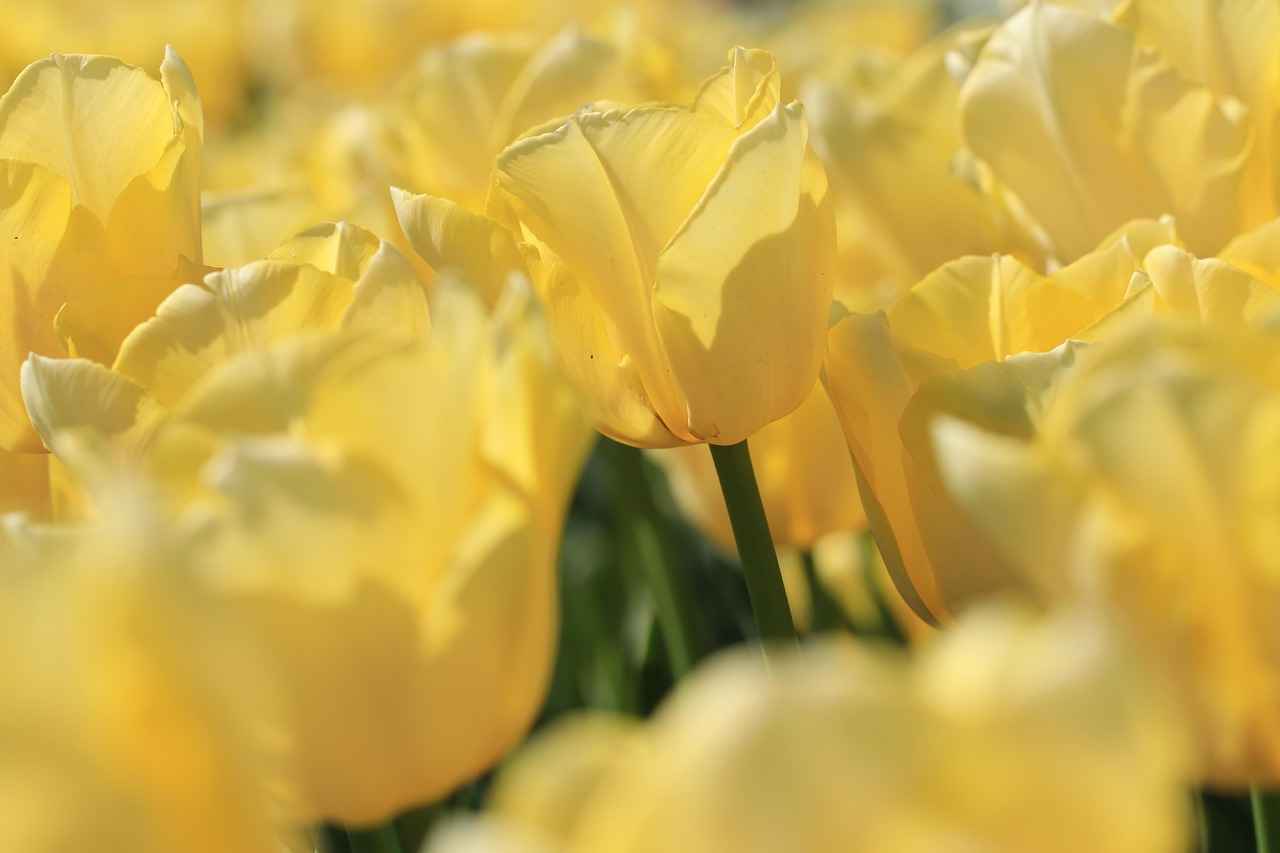
Blending Indian and Western Easter Traditions
The celebration of Easter among Indian families in New York City is a vibrant tapestry woven from both Indian and Western customs. This blending not only enriches the holiday experience but also reflects the multicultural essence of the city itself. In this section, we will explore how Indian families embrace Western traditions while maintaining their cultural identity, creating a unique celebration that is both familiar and novel.
As Indian families in NYC celebrate Easter, they often incorporate Western customs into their festivities. One of the most popular Western traditions is the Easter egg hunt. This engaging activity involves hiding eggs, often decorated, for children to find. It adds an element of fun and excitement that resonates with families, allowing children to partake in a joyful experience that is common in many Western households.
Another Western custom that has gained popularity is the figure of the Easter Bunny. This whimsical character symbolizes new life and rebirth, aligning perfectly with the themes of Easter. Many families embrace this tradition by including Easter Bunny-themed decorations and gifts, which adds a playful touch to their celebrations. Children often look forward to receiving chocolate bunnies and other sweet treats, making the day even more special.
While Western traditions bring a fresh perspective to Easter celebrations, Indian families are keen on preserving their cultural heritage. This balance is crucial, as it allows families to honor their roots while also embracing new experiences. Traditional Indian customs during Easter include attending church services, where families gather to reflect on the religious significance of the holiday.
Many families prepare traditional dishes that reflect their Indian heritage. Dishes such as biriyani, fish curry, and various lentil preparations are commonly served, often alongside Western dishes like roasted lamb or ham. This fusion of cuisines creates a diverse and flavorful Easter feast that appeals to all generations within the family.
Additionally, the use of symbolic decorations, such as colorful rangoli designs and floral arrangements, is prevalent in Indian households during Easter. These decorations not only enhance the festive atmosphere but also serve as a reminder of the rich cultural traditions that families hold dear.
As families come together for this celebration, they engage in meaningful discussions about their cultural practices, ensuring that younger generations understand the significance of their heritage. This educational aspect is vital in fostering a sense of identity and belonging among children growing up in a multicultural environment.
The fusion of Indian and Western traditions during Easter in NYC results in a unique experience that is both enriching and memorable. Families often organize community events where they can share their customs with neighbors and friends, further enhancing the spirit of togetherness. These gatherings may include potluck dinners, cultural performances, and community service initiatives, all aimed at fostering unity and collaboration.
Moreover, Indian families often partake in charitable activities during Easter, reflecting the values of compassion and generosity that are central to both Indian and Christian traditions. Whether it’s donating to local shelters or volunteering at community centers, these acts of kindness deepen the connection to the holiday’s core message of love and sharing.
In conclusion, the blending of Indian and Western Easter traditions creates a rich and vibrant celebration for families in NYC. By incorporating Western customs while maintaining their cultural heritage, Indian families not only celebrate the holiday but also contribute to the multicultural fabric of the city. This unique fusion allows for a celebration that is both meaningful and enjoyable, ensuring that the spirit of Easter is felt by all.
Incorporating Western Customs into Indian Celebrations
As globalization continues to shape cultural practices, many Indian families in New York City are embracing Western customs during Easter. This blending of traditions not only enriches their celebrations but also fosters a sense of community and belonging in a diverse environment. Notably, two prominent Western traditions that have gained popularity among Indian families are egg hunts and the Easter Bunny.
Embracing the Easter Bunny Tradition
The Easter Bunny, a beloved symbol of Easter in Western cultures, has found its way into the hearts of many Indian families. Traditionally, the Easter Bunny is depicted as a rabbit that delivers eggs to children on Easter Sunday. In Indian households, this custom is often adapted to fit their cultural context. For instance, children eagerly await the arrival of the Easter Bunny, who brings not just chocolate eggs but also colorful, decorated eggs that families create together.
To integrate this tradition, Indian families often organize Easter Bunny visits during family gatherings or community events. These visits involve a family member dressing up as the Easter Bunny, creating a festive atmosphere filled with laughter and excitement. This not only enhances the joy of the celebration but also provides an opportunity for families to bond over the shared experience of preparing for the Bunny’s arrival.
Organizing Egg Hunts
Another Western custom that has been widely adopted is the tradition of egg hunts. These hunts involve hiding decorated eggs around the house or garden for children to find. Indian families in NYC have taken this tradition and infused it with their cultural flair. Instead of just chocolate eggs, families often use colorful plastic eggs filled with traditional Indian sweets or small toys, creating a delightful surprise for the children.
Communities often come together to organize large-scale egg hunts, fostering a sense of unity among families. These events are not only fun for children but also provide a platform for parents to socialize and share their cultural practices. Many families take pride in decorating their eggs with intricate designs that reflect their Indian heritage, merging creativity with tradition.
Creating a Fusion of Celebrations
Incorporating Western customs into their Easter celebrations allows Indian families to create a unique fusion of traditions. Many families will blend the traditional Indian observances with Western practices, such as starting the day with a church service followed by a festive brunch that includes both Indian and Western dishes. This approach not only honors their roots but also embraces the new cultural landscape they find themselves in.
For instance, it is common for families to serve hot cross buns, a traditional Western Easter treat, alongside sheer khurma, a delicious Indian dessert made with vermicelli and milk. This culinary fusion is a testament to the rich tapestry of cultures that coexist in NYC, showcasing how food can serve as a bridge between different customs.
Moreover, as families share their experiences and traditions, they often inspire one another to continue this blend of practices, ensuring that the celebration of Easter remains vibrant and inclusive. Whether through community events or family gatherings, the incorporation of Western customs is a reflection of the evolving identity of Indian families in New York City.
As these families celebrate Easter, they not only honor their cultural heritage but also embrace the joy of new traditions, fostering a spirit of unity and diversity that is at the heart of this festive occasion.
Maintaining Cultural Heritage While Celebrating
In the vibrant tapestry of Indian culture, the celebration of Easter stands out as a unique opportunity for families to blend their rich traditions with new practices. While embracing modern elements of this festive occasion, Indian families in New York City remain deeply committed to preserving their cultural heritage. This balance creates a rich and meaningful celebration that honors both the past and the present.
Understanding the Importance of Cultural Heritage
Cultural heritage encompasses the traditions, values, and practices that define a community. For Indian families, this heritage is often tied to religious observances, family gatherings, and culinary traditions. During Easter, families reflect on their roots while also engaging with the broader cultural landscape of their new home in NYC.
Celebrating with Traditional Practices
One of the most significant ways Indian families maintain their cultural heritage during Easter is through traditional religious observances. Many families continue to attend church services that incorporate elements of Indian culture, such as hymns sung in regional languages and prayers that resonate with their cultural identity. These services not only reinforce spiritual beliefs but also serve as a reminder of their roots.
In addition to attending church, families often engage in traditional practices such as decorating their homes with symbols that reflect their heritage. For instance, they may adorn their spaces with vibrant Rangoli designs or traditional Indian motifs alongside Easter decorations, creating a unique fusion that celebrates both cultures.
Integrating New Customs
While honoring their heritage, Indian families also embrace new customs that have become part of the Easter celebration in the West. Activities like Easter egg hunts and the presence of the Easter Bunny have been enthusiastically adopted. However, these practices are often infused with Indian elements, such as using brightly colored eggs that resemble traditional Indian sweets or incorporating local spices into Easter dishes.
This integration of new customs does not overshadow traditional values; rather, it enriches the celebration. Families often share stories that connect these new practices back to their cultural roots, fostering a sense of belonging and continuity.
Food as a Cultural Bridge
Food plays a pivotal role in maintaining cultural heritage during Easter celebrations. Indian families prepare a mix of traditional Indian dishes and Western Easter foods, creating a culinary experience that reflects their dual identity. For instance, while some may bake a traditional Easter cake, others might prepare biryani or curry, showcasing the diversity of their culinary traditions.
Moreover, sweets are an essential part of the celebration. Indian families often make desserts that are not only festive but also hold cultural significance. For example, they might prepare ‘sevaiyaan’ (vermicelli) or ‘kheer’ (rice pudding), which are enjoyed during special occasions, thus linking the celebration of Easter with cherished family traditions.
Community Engagement and Cultural Exchange
Community plays a crucial role in how Indian families celebrate Easter. Many families participate in community events that foster cultural exchange, allowing them to share their traditions with others while also learning about different customs. This interaction enriches their understanding of the diverse cultural landscape of New York City.
Participating in community outreach and charity events during Easter allows families to give back, embodying the spirit of the holiday. These activities often reflect the values of compassion and generosity that are central to both Indian culture and the Easter message.
In conclusion, while Indian families in NYC embrace new traditions during Easter, they do so in a way that honors their cultural heritage. By integrating traditional practices, engaging in community events, and celebrating through food, they create a rich tapestry of customs that reflect their unique identity. This blending of old and new not only enhances their Easter celebrations but also strengthens their connection to their cultural roots.

Conclusion: Celebrating Diversity and Unity
Easter in New York City is not just a religious observance; it is a vibrant tapestry woven from the diverse cultural threads of the Indian community. As Indian families gather to celebrate this festive occasion, they exemplify the beauty of multiculturalism and the strength of unity in diversity. This celebration highlights shared values and fosters community bonds, making it a significant event for many.
During Easter, Indian families in NYC engage in a variety of traditions that reflect both their cultural heritage and the influence of Western customs. This blending of practices creates a unique celebration that honors the essence of Easter while also embracing the distinctiveness of Indian culture. Many families begin their Easter celebrations with religious observances at local churches, where they participate in special masses that incorporate familiar elements of both Indian and Christian traditions. These services often feature music in local languages and community hymns that resonate with attendees, fostering a sense of belonging and togetherness.
Furthermore, the importance of community cannot be overstated. Indian families often come together to host or participate in community events that emphasize giving back. Charity initiatives during Easter allow families to embody the spirit of the holiday by helping those in need. Whether through food drives or volunteering at local shelters, these acts of kindness reinforce the values of compassion and generosity that are central to both Easter and Indian culture.
As families gather for festive meals, the culinary aspect of Easter becomes a focal point of celebration. Traditional foods are prepared, often incorporating both Indian and Western elements. For instance, families might serve biryani alongside hot cross buns, creating a delightful fusion that showcases their rich culinary heritage. This unique blend of flavors not only satisfies the palate but also serves as a reminder of the diverse backgrounds that come together during this holiday.
Decorations play a vital role in setting the festive mood. Indian families often adorn their homes with symbolic decorations that reflect both the essence of Easter and their cultural roots. Colorful eggs, flowers, and handmade crafts fill their living spaces, creating a warm and inviting atmosphere. Engaging in DIY decoration projects can also serve as a bonding activity for families, fostering creativity and togetherness as they prepare for the festivities.
Ultimately, Easter stands as a testament to the strength of diversity and unity among Indian families in NYC. By celebrating their unique customs while embracing new traditions, they create a rich and meaningful experience that resonates with the spirit of the holiday. This multicultural celebration not only honors their heritage but also strengthens community ties, reminding everyone of the shared values that bind them together during this joyous occasion.

